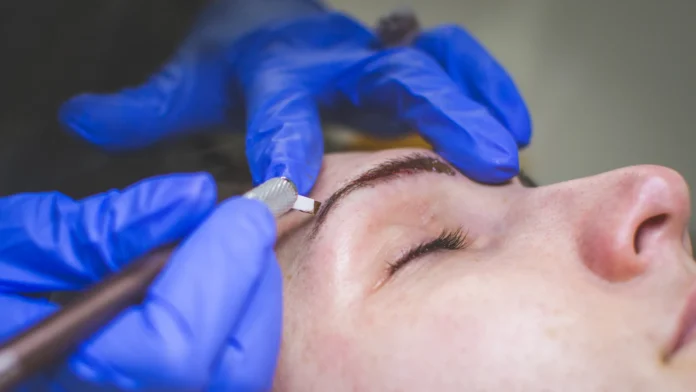Microblading, a trendy cosmetic procedure aimed at enhancing eyebrow appearance, has recently come under scrutiny following reports of severe health complications in two women. Both aged 33, the women developed a rare lung disease known as systemic sarcoidosis after undergoing microblading treatments for their eyebrows, as reported by The Sun.
Systemic sarcoidosis is an autoimmune condition characterized by the formation of granulomas, small clusters of inflammatory cells, in various organs of the body. While the exact cause of sarcoidosis remains unclear, it is believed to involve an abnormal immune response triggered by environmental or genetic factors.
The emergence of such cases raises concerns about the safety and potential risks associated with microblading procedures. Despite its popularity as a minimally invasive technique for achieving fuller and more defined eyebrows, the recent incidents highlight the importance of thorough consideration before undergoing cosmetic treatments.
Microblading involves the use of a handheld tool with fine needles to deposit pigment into the skin, creating natural-looking hair strokes that mimic the appearance of real eyebrows. While the procedure is generally considered safe when performed by trained professionals in a sterile environment, there are inherent risks, including infection, allergic reactions, and in rare cases, more serious health complications.
In light of the reported cases of systemic sarcoidosis linked to microblading, individuals considering the procedure should exercise caution and conduct thorough research. It is essential to consult with a qualified and experienced practitioner who can assess individual risk factors and provide comprehensive pre-procedure evaluations.
Furthermore, prospective patients should inquire about the quality and safety standards of the facility where the microblading procedure will take place. Ensuring adherence to strict hygiene protocols and the use of high-quality, sterile equipment can help mitigate the risk of adverse outcomes.
In recent years, microblading has surged in popularity as a semi-permanent solution for achieving well-defined eyebrows without the need for daily makeup application. The technique has been lauded for its ability to enhance facial features and boost self-confidence, particularly for individuals with sparse or uneven brows. However, the emergence of adverse health effects associated with microblading underscores the importance of informed decision-making and awareness of potential risks.
The reported cases of systemic sarcoidosis following microblading have raised questions about the safety of the procedure and its potential impact on overall health. Sarcoidosis is a complex autoimmune disorder that can affect multiple organs, including the lungs, skin, eyes, and lymph nodes. While it is relatively rare, sarcoidosis can lead to serious complications and require ongoing medical management.
The exact mechanisms by which microblading may trigger or exacerbate sarcoidosis are not fully understood. However, some experts speculate that the introduction of foreign substances, such as pigments or other ingredients used in the microblading process, could potentially trigger an inflammatory response in susceptible individuals. Additionally, the trauma caused by the microblading needles penetrating the skin may disrupt the delicate balance of the immune system, contributing to the development of autoimmune conditions.
In light of these concerns, individuals considering microblading should carefully weigh the potential benefits against the risks and exercise caution when selecting a provider. It is essential to choose a reputable and experienced practitioner who follows strict hygiene protocols and uses high-quality, sterile equipment to minimize the risk of complications. Furthermore, patients should undergo thorough pre-procedure evaluations to assess their suitability for microblading and identify any underlying health issues that may increase their risk of adverse reactions.
While the reported cases of systemic sarcoidosis linked to microblading are rare, they serve as a reminder of the importance of transparency, informed consent, and ongoing monitoring in the realm of cosmetic procedures. Patients should be encouraged to ask questions, voice concerns, and seek clarification about the potential risks and benefits of microblading before proceeding with treatment.
While microblading can offer aesthetic benefits and enhance self-esteem for many individuals, it is not without risks. Patients should approach the decision to undergo microblading with caution and ensure that they are well-informed about the procedure and its potential implications for their health. By prioritizing safety, transparency, and patient-centered care, both practitioners and patients can work together to minimize the likelihood of adverse outcomes and promote positive experiences with cosmetic treatments.

